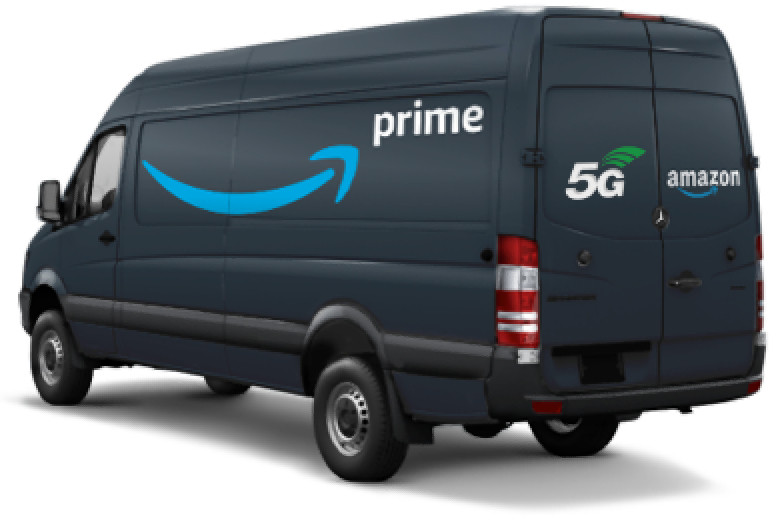Sponsors Article
5G campus network – soon simply from Amazon?
Amazon will establish itself as a supplier of private 5G campus networks. (Source: Amazon)
Clicked, paid, delivered – online shopping is really easy. Online giant Amazon offers not only physical products from bed linen to food to the complete server, but also cloud services of all kinds under its AWS brand (Amazon Web Services). But now the group has decided to combine both: Private 5G networks will soon also be available at the push of a button. In the USA, the service is already available as a “preview”.
CEO Adam Selipsky used the AWS re:Invent technology event in Las Vegas to introduce a new service: AWS Private 5G. This is virtually a 4G/5G campus network “out of the box”, which companies can order from the Amazon cloud subsidiary and put into operation within a few days, according to the promise.
Billing like an Amazon web service
The Amazon announcement suggests that ordering a full campus network is just as easy as, say, booking a website or phone line. In the AWS console, customers can specify with just a few clicks where the network should be created and what network capacities are needed. From this, AWS determines which hardware is required and accordingly supplies small cell radios, servers, software for the 5G core and the radio access network (RAN) as well as the SIM cards for connecting the devices.
The network is fully managed from the AWS cloud, and setup and deployment are largely automated. In addition, it should be as easy as possible to quickly scale the campus network if necessary. Billing takes place in the pay-per-use model, i.e. there are no upfront fees or costs per device, but customers pay for the network capacity provided and the requested throughput.
Fewer own skills needed
Conception, planning and implementation of your own 5G campus network have so far been a time-consuming process. In addition, many companies do not have the necessary in-house know-how, so they are dependent on external support from partners. On the one hand, these can be the large network operators, all of which are now turning to industry with cooperation offers in order to make private and public networks available with different models. However, these can also be service providers who, with proven competence in the field of wireless networks, are expanding corporate networks with 5G capabilities.
This is where Amazon jumps into the breach and offers to relieve customers to a large extent. They would not have to invest a lot of time, money and effort to design their network for the expected peak capacity and to procure and integrate software and hardware components from several providers. If necessary, a certified technician can take over the installation on site.
“You get all the goodness of mobile technology without the pain of long planning cycles, complex integrations and the high upfront costs. You tell us where you want to build your network and specify the network capacity. We ship you all the required hardware, the software and the SIM cards.”
Adam Selipsky, CEO Amazon Web Services (AWS)
In addition, Selipsky referred to the cost model of numerous network operators, which binds the costs to the number of SIM cards used. This makes it unaffordable for use cases involving thousands of connected devices. In contrast he praises AWS’ “familiar on-demand cloud pricing model”.
The technology behind
So far, the service has been limited to the USA and is only shown here as a preview (see registration page). In the medium term, however, the offer is to be rolled out to other markets and regions.
The radio cells now in use use the US CBRS bands with a cellular core hosted in a regional AWS data center. Alternatively, the core can be operated locally on a server using AWS Outpost services. CBRS frequencies must be managed using a Spectrum Access System (SAS) in accordance with U.S. regulations, which requires Amazon Web Services to work with a SAS provider. Who this will be is not yet known.
Even though the service is not yet fully live, AWS is already looking to the future and is promising an expansion of the selection options for both the 5G core and the RAN components. More and more vendors would test their wireless technology and operating software on the AWS platform, including Nokia, Ericsson, Cisco, Mavenir, and Altiostar (Rakuten Symphony). In addition, the service will not be limited to the CBRS spectrum, but will also make other frequencies usable, including licensed bands. This could potentially also position Amazon as a partner for smaller communication service providers (CSPs).
Doubts remain
The offer sounds tempting at first, but anyone who deals with wireless data communication will encounter unresolved questions. For example, reliable illumination of the company premises is one of the trickiest tasks when installing a campus network – no matter if it is based on 4G/5G, WLAN or another wireless standard. But in the announcements so far, Amazon has omitted this topic.
We would therefore like to ask our readers: What do you think – can an “out-of-the-box” solution succeed? Will Amazon be able to make a relevant contribution to accelerating the spread of 5G campus networks with its AWS Private 5G? Where could this possibly succeed – and where does such a concept reach its limits? We look forward to your contributions! Send us your opinion at redaktion@fuenf-g.de.




